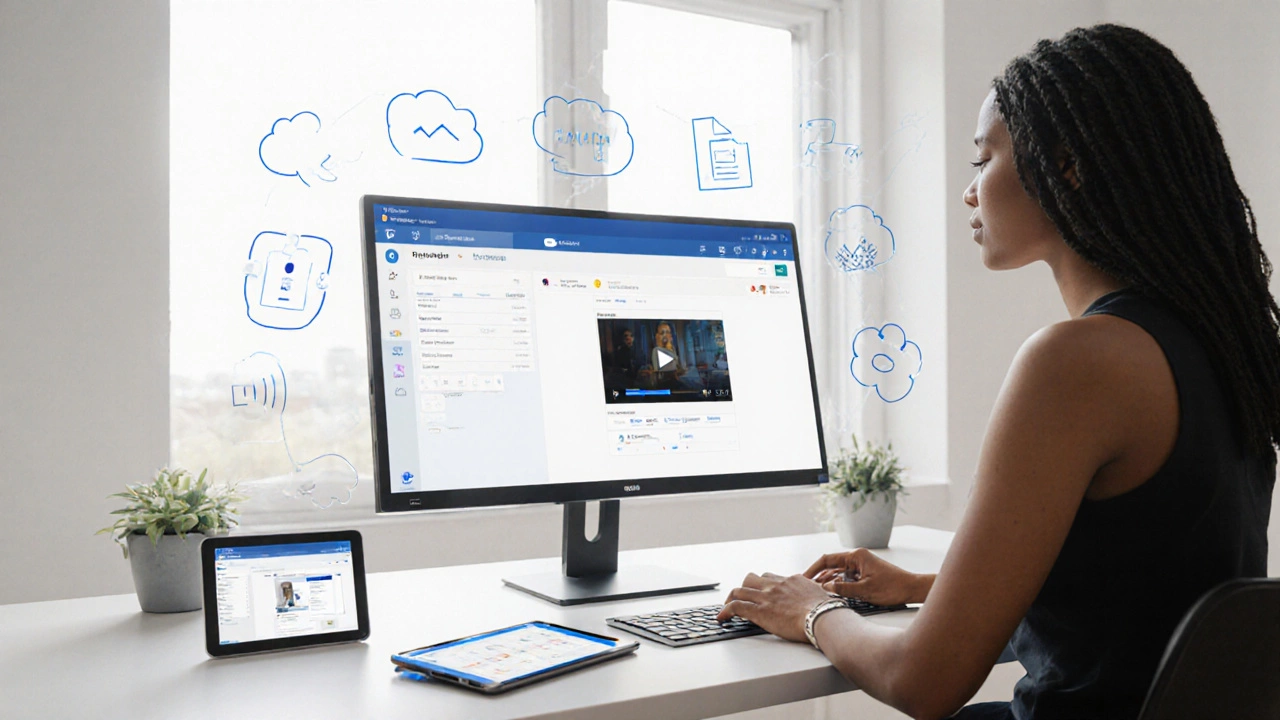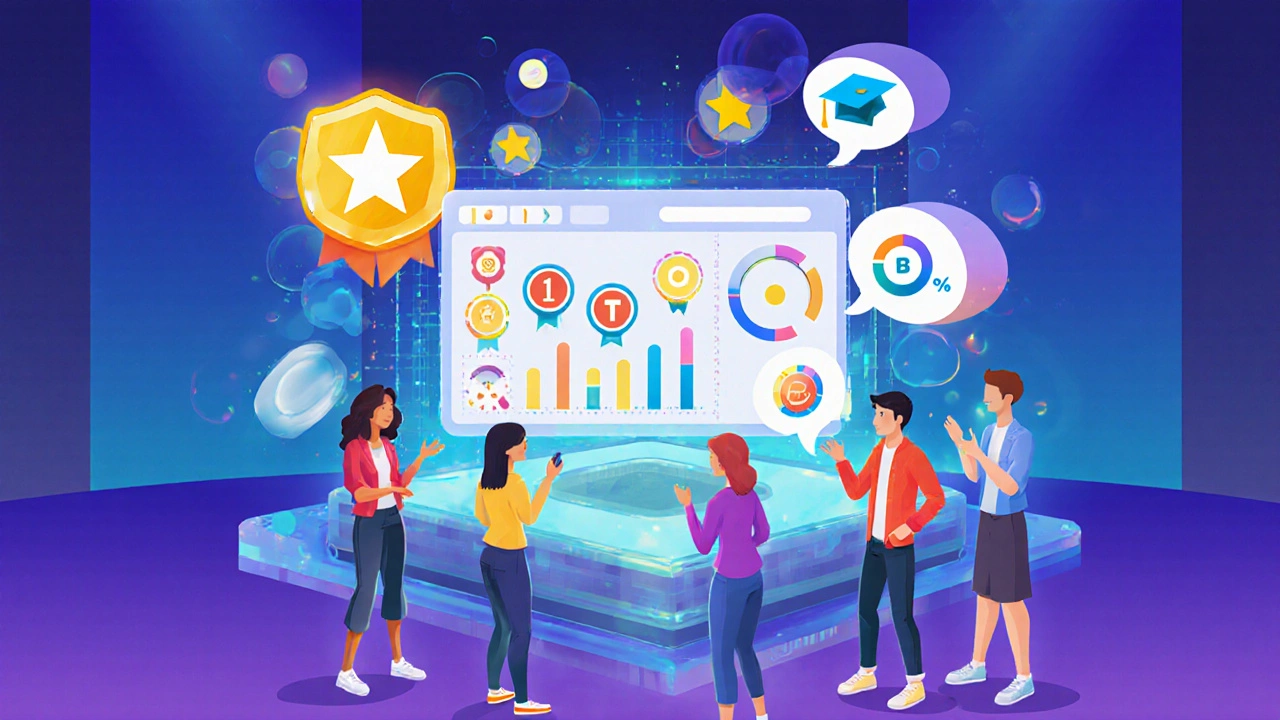
E-Learning Platform Evaluation Calculator
Evaluate Your E-Learning Platform Needs
This tool helps you assess which e-learning platform features matter most to your organization. Rate the importance of each criterion to identify your ideal platform.
When we talk about a e-learning platform is a digital environment that hosts, delivers, and manages educational content for learners of all ages, we’re really looking at the whole ecosystem that powers online courses. A good platform does more than just stream video; it creates a seamless path from curiosity to mastery.
Quick Takeaways
- Content delivery must be fast, flexible, and offline‑ready.
- UX should feel natural on desktop, tablet, and phone.
- Engagement tools like gamification and social hubs keep learners coming back.
- Analytics give educators data to improve courses in real time.
- Scalability, security, and integrations protect growth and trust.
1. What the Platform Is Supposed to Do
Before diving into features, ask yourself: what problem are you solving? Most e‑learning ventures aim to replace or supplement face‑to‑face instruction, reach a wider audience, and lower costs. That means the platform must:
- Host a variety of media - video, audio, PDFs, interactive labs.
- Track progress and award certificates automatically.
- Support both self‑paced learners and instructor‑led sessions.
When these core goals are covered, everything else becomes an enhancement rather than a make‑or‑break factor.
2. Core Content Engine
At the heart of any Learning Management System (LMS) is a software layer that organizes courses, assigns users, and records outcomes. A solid LMS provides:
- Version‑controlled content libraries so teachers can update a single file and push changes instantly.
- Chunked streaming that adjusts video quality based on bandwidth, reducing buffering.
- Offline download options for learners with spotty internet.
These capabilities keep the learning experience smooth, even when a student jumps between a coffee shop Wi‑Fi and a home broadband connection.
3. User Experience that Feels Natural
Good UX is invisible. If a learner can find a module, start a quiz, and see results without hunting through menus, the platform wins points automatically. Look for:
- Clear navigation hierarchy - courses → modules → lessons.
- Consistent visual language: same button styles, fonts, and color cues across pages.
- Responsive design that rearranges cards and menus to fit any screen size.
When the interface respects a user’s time, completion rates climb dramatically.

4. Engagement Mechanics
Passive watching leads to drop‑off. Adding Gamification is a set of game‑like elements-points, badges, leader‑boards-applied to non‑game contexts injects a sense of progress.
Effective gamification includes:
- Badges for milestones like "First Quiz Completed" or "100% Course Completion".
- Leader‑boards that compare peer performance while preserving anonymity.
- Progress bars that update in real time, giving learners a visual cue of how far they’ve come.
Combine these with discussion forums or live chat to create a social learning environment where students help each other, ask questions, and celebrate wins together.
5. Data‑Driven Insights
Educators need more than enrollment numbers. An Analytics dashboard is a visual interface that aggregates learner behavior, assessment scores, and engagement metrics turns raw data into actionable insights.
Key metrics to watch:
- Drop‑off points: where learners stop watching a video or abandon a quiz.
- Average time‑on‑task: whether activities are too short or overly long.
- Completion rates per cohort: helps spot seasonal trends.
When the platform surfaces these patterns, instructors can tweak content, add supplemental resources, or restructure modules to improve outcomes.
6. Technical Foundations: Scalability, Security, and Integration
Growth shouldn’t break the system. A platform built on cloud‑native architecture can automatically spin up new servers as enrollment spikes during a marketing campaign. Scalability is a property that allows a system to handle increasing workloads without performance loss ensures that thousands of concurrent learners won’t cause lag.
Equally important is Security is a set of policies and technologies that protect data from unauthorized access and breaches. Look for:
- End‑to‑end encryption for video streams and personal data.
- Compliance with standards like GDPR (critical for European users) and POPIA (South Africa).
- Regular penetration testing and security patches.
Finally, no platform exists in isolation. Integration APIs are standardized interfaces that let the platform talk to external tools such as CRM, HRIS, or third‑party content libraries. Robust APIs mean you can pull learner data into a company’s talent management system or push certifications to professional boards without manual export.
7. Accessibility and Mobile‑First Design
Good platforms respect diverse abilities. Follow WCAG 2.2 guidelines: provide captions for videos, ensure keyboard navigation works, and use sufficient color contrast. Mobile‑first design isn’t a nice‑to‑have; more than 60 % of global learners access courses on smartphones.
Key mobile considerations:
- Touch‑friendly controls - large tap targets for quizzes.
- Progress saving that works even when users switch between devices mid‑lesson.
- Low‑bandwidth mode that swaps high‑resolution video for audio‑only streams.
When a platform feels native on a phone, learners can study on the bus, in a café, or while waiting for a meeting to start.
8. Checklist for Picking the Right Platform
Use this quick list when you’re evaluating vendors or building your own solution:
- Does it support multiple content formats (video, SCORM, HTML5)? \n
- Is the UI intuitive for both beginners and power users?
- Are gamification and social tools built‑in or add‑on?
- Can you view real‑time analytics on learner progress?
- Will the system scale to 10 k, 100 k, or more concurrent users?
- What security certifications does it hold (ISO 27001, GDPR, POPIA)?
- Are APIs available for LMS‑to‑HRIS or payment gateway integration?
- Does it meet WCAG 2.2 accessibility standards?
- Is there offline mobile support for low‑connectivity regions?
- What is the total cost of ownership - licensing, hosting, support?
Cross‑checking each bullet against your project’s budget and timeline will narrow the field to platforms that truly fit your mission.
Frequently Asked Questions
What is the difference between an LMS and a digital learning platform?
An LMS focuses on administration - enrolling users, tracking scores, and issuing certificates. A digital learning platform expands on that by adding content creation tools, social interaction, gamified pathways, and integrations with other business systems.
How important is mobile responsiveness?
Extremely important. Over half of global learners use smartphones as their primary device. A platform that isn’t mobile‑friendly loses engagement, completion rates, and ultimately revenue.
Can I add my own gamification features?
Yes, if the platform offers open APIs or a built‑in gamification engine. Look for customizable badge libraries and point‑allocation rules that you can tweak without deep code changes.
What security standards should I demand?
At minimum, the platform must encrypt data in transit (TLS 1.2+), be GDPR‑compliant for EU users, and meet local regulations like POPIA for South Africa. ISO 27001 certification adds an extra layer of credibility.
How do analytics improve learner outcomes?
Analytics reveal where learners struggle - for example, a high drop‑off after a particular video. Instructors can then insert a short quiz, add captions, or create supplemental material, directly boosting completion and mastery.





